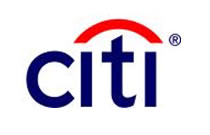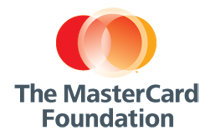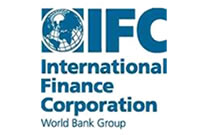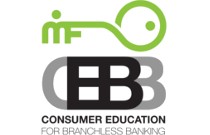
By Julie Lee and Guy Stuart, Ph.D. | August 27, 2014
Last week we highlighted historic challenges to scaling financial education (FE) and offered the embedded education model as one viable solution. The embedded approach has the potential to benefit traditionally under- and unbanked populations and financial service providers (FSPs) alike. Of course, embedded education is about more than simply incorporating educational resources within providers existing delivery channels. In large part, the success of embedded education hinges on putting clients at the center of its design and implementation and understanding how financial capability is developed.
The first post in this series raised the importance of adult learning principles (relevance, dialogue, immediacy, and respect, to name a few) for the effective design of educational materials. These principles ensure that materials will reshape consumers’ attitudes and build their knowledge, skills, and self-confidence to act on their financial decisions. The approach is holistic and engaging, providing consumers with the opportunity to dialogue with others as they learn and to wrestle with their questions. The approach also provides the opportunity to apply new knowledge and skills, leveraging moments when consumers are positioned to act on what they are learning, for example, while transacting with the FSP. Finally, the approach ensures that the educational messages are reinforced, so that financial education is not a one-off event and clients are frequently exposed to key messages.
MFO’s experience over the past few years with embedded education suggests that a good embedded education strategy involves five key elements:
- Identify existing consumer contact points that are most feasible for integrating FE;
- Develop clear, concise, and consistent financial management messages for the consumer audience;
- Build engaging tools to deliver messages that use the organization’s existing communication channels with consumers;
- Empower frontline staff to be agents for sharing and reinforcing FE during real time encounters;
- Engage stakeholders to strengthen the enabling environment for financial capability development and help ensure that the success of FE is not dependent on one set of actors or one contact point.
To illustrate the process, let’s look at MFO’s FE program in Zambia with partners Zoona, an electronic payments platform that provides real-time payments through cash distribution channels, and VisionFund (VF), a microfinance institution. Prior to the program, VF had just switched to an electronic system for loan disbursals using Zoona’s platform. Migrating to the new electronic system proved to be challenging for VF clients who were accustomed to the old way of receiving and repaying loans, and had minimal understanding of how the new system worked. The FE program aimed to build clients’ financial capabilities by breaking through barriers related to knowledge, skills, and self-confidence to use the service appropriately as well as to increase trust in the service. The FE program also tackled basic money management topics such as tracking spending, budgeting, debt management, and saving, so clients could strengthen their financial capabilities and become more effective clients of VF.
The embedded consumer education program was designed to resolve consumer queries about the Zoona service and concerns about an electronic payment service in general: What is a mobile wallet? How does the PIN keep my money safe? How do I collect my loan from the agent? What happens if I lose my cell phone?
Here’s how the embedded FE strategy worked. MFO designed a financial education strategy that leveraged existing consumer contact points and ‘teachable moments’ within Zoona and VisionFund’s existing infrastructure. First, MFO developed eight 20-minute FE sessions that VF loan officers could incorporate within their preexisting monthly meetings with their client loan groups. Clients also received illustrated workbooks to use during the FE trainings and to help reinforce key FE messages at home. Finally, when client loan groups visited agents to collect their loan disbursements, the agents led 5-minute refresher sessions focused solely on the Zoona service, followed by a 5-minute Q&A.
The FE delivered at each customer contact point was designed to fit the context of the specific contact point with regards to the person delivering the FE, the amount of time with clients, and the physical location. VF loan officers and Zoona agents received training on how to deliver FE and tools appropriate for use at their customer contact points. The tools were designed in a simple, visually appealing manner to engage customers’ interest and facilitate clear, consistent explanations of a topic.
In addition to the client workbooks, VF loan officers used colorful, illustrated posters to support their training. Zoona agents received a set of posters that focused on the Zoona service. Each poster was made of a resilient rubberized material for hanging inside or outside the agent shop and represented a key message to convey to loan groups during a given visit. Zoona agents also received a counter sheet, a laminated visual aide that they could place on their counter to illustrate the steps for transacting with the Zoona loan disbursement and repayment system.
The effective [1] implementation of MFO’s embedded strategy in Zambia was due to the positioning of the overall FE program within the FSP’s operational processes and by its alignment with the business objectives of VisionFund and Zoona. Frontline staff and agents are more likely to engage in strengthening the financial capability of consumers when the FE helps them achieve the outcome or the performance required for their jobs – for example, lower delinquency among borrowers or faster transactions, allowing them to serve more customers at the agent’s shop.
The embedded approach simultaneously enhances the capacity of low-income consumers to make informed financial decisions and mitigates challenges to implementation of FE for FSP’s. Utilizing monthly loan meetings and client visits to collect loans allowed VisionFund and Zoona to embed educational encounters within their preexisting service contact points; doing so enabled VisionFund and Zoona to reduce costs, increase relevance to core business, and deliver FE to customers at scale. Meanwhile, VF clients received the resources they needed to make and exercise money management decisions that best fit the circumstances of their lives. By the end of the program, VF clients showed positive changes in knowledge, skills, attitude, self-confidence and behaviors around money management and use of the Zoona service.
This post is part of MFO’s new blog series, where we’ll share key learning and evidence from our current work. We’ll focus on outcomes of our embedded education model next week, with emphasis on evidence from the program in Zambia. Stay tuned.
[1] Tower, C. and Noggle, E. ‘Zambia Outcomes Assessment’, Washington, DC: Microfinance Opportunities.







